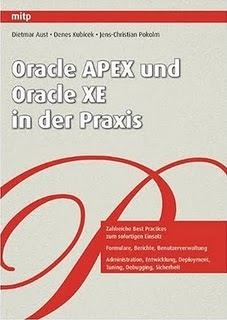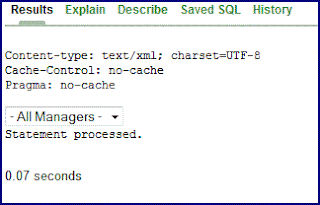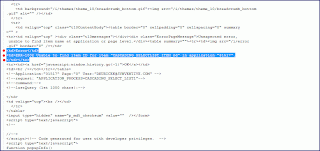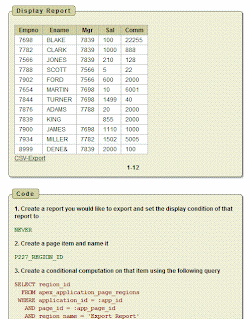
Merry Christmas to all of you.
Denes Kubicek














htmldb_Get(null,html_GetElement('pFlowId').value,
'APPLICATION_PROCESS=CASCADING_SELECT_LIST1',0);
get.add('CASCADING_SELECTLIST_ITEM_1',pThis.value);
f?p=&APP_ID.:0:&SESSION.:APPLICATION_PROCESS=CASCADING_SELECT_LIST1:
NO::CASCADING_SELECTLIST_ITEM_1:30



<style type="text/css">
.top_header{background-image:
url(#IMAGE_PREFIX#themes/theme_basf/Sorp2.gif);
background-repeat: no-repeat;
background-position: 290px -45px;
background-color:#BFD0F4;}
.basf01overlapping{background-image:
url(#IMAGE_PREFIX#themes/theme_basf/Sorp2.gif);
background-repeat: no-repeat;
background-position: 290px -15px;}
</style>
<!--[if gte IE 6]>
<style type="text/css">
#navigationArea{width:99%;}
</style>
<![endif]-->

SELECT CASE
WHEN deptno = 10
THEN '<a href="javascript:popUp2('''
|| 'f?p=&APP_ID.:500:&SESSION.::&DEBUG.::'
|| 'P500_DEPTNO:'
|| deptno
|| ''', 700, 700);">'
|| '<img src="#IMAGE_PREFIX#gobut.gif">'
|| '</a>'
WHEN deptno = 20
THEN '<a href="javascript:popUp2('''
|| 'f?p=&APP_ID.:501:&SESSION.::&DEBUG.::'
|| 'P501_DEPTNO:'
|| deptno
|| ''', 700, 700);">'
|| '<img src="#IMAGE_PREFIX#go_search.gif">'
|| '</a>'
ELSE '<a href="javascript:popUp2('''
|| 'f?p=&APP_ID.:502:&SESSION.::&DEBUG.::'
|| 'P502_DEPTNO:'
|| deptno
|| ''', 700, 700);">'
|| '<img src='
|| '"#WORKSPACE_IMAGES#go_button.gif">'
|| '</a>'
END LINK,
ename, job, hiredate
FROM emp
SELECT CASE
WHEN deptno = 10
THEN return_link_fn (p_page => 500,
p_item => 'P500_DEPTNO',
p_value => deptno,
p_image_n => 'gobut.gif'
)
WHEN deptno = 20
THEN return_link_fn (p_page => 501,
p_item => 'P501_DEPTNO',
p_value => deptno,
p_image_n => 'go_search.gif'
)
ELSE return_link_fn (p_page => 502,
p_item => 'P502_DEPTNO',
p_value => deptno,
p_image_n => 'go_button.gif'
)
END LINK,
ename, job, hiredate
FROM emp


BEGIN
IF ( apex_util.public_check_authorization ('AUTH_GROUP_1')
OR apex_util.public_check_authorization ('AUTH_GROUP_2')
)
AND :p12_status = '0'
THEN
RETURN TRUE;
ELSIF ( apex_util.public_check_authorization ('AUTH_GROUP_2')
OR apex_util.public_check_authorization ('AUTH_GROUP_3')
)
AND :p12_status = '1'
THEN
RETURN TRUE;
ELSE
RETURN FALSE;
END IF;
END;







